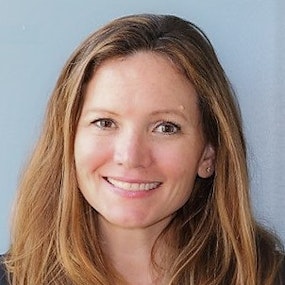ROBERT JOHNSON:
This is the award-winning Public Health Review Morning Edition for Friday, September 29, 2023. I'm Robert Johnson. Now, today's news from the Association of State and Territorial Health Officials.
KYLE ZEBLEY:
Our healthcare system has left a lot of people behind for many years. And one of the great potentials of telehealth is to make sure that no American is left behind.
JOHNSON:
Kyle Zebley is with the American Telemedicine Association.
ZEBLEY:
Telehealth Awareness Week is about more than just the ATA spreading the word of telehealth. It's about individual patients and providers and Americans across the country. Lifting up their voice and letting it be known that they want to make sure that telehealth is something that is here to stay and that there will be more options to virtual care in future.
JOHNSON:
Zebley says even though people are aware of telehealth, some patients and their providers are slow to take advantage of the tool.
ZEBLEY:
And so too, I would say that there are obstacles that don't have anything to do with public policy. There are more in the nature of reticence from providers or from patients to include telehealth as an option for care when it might be appropriate. So, we've got to socialize what is possible and what the full potential of telehealth is. And that's something that goes beyond, of course, the public policy realm.
JOHNSON:
Where communities might have fewer care options as Zebley says telehealth can help fill those gaps.
ZEBLEY:
Also, I think one of the great potentials of telehealth is to remove geographic barriers to expand clinically appropriate options for Americans to make sure that the healthcare system is keeping up with these great technological advances. And so while we apply the time-honored and time trusted capabilities of our healthcare professionals, we're going to be able to do more with those professionals through the efficiencies of telehealth. It's truly part of the future of care. And it's that future that is happening now.
JOHNSON:
Learn more about telehealth using the link in the show notes.
It's down to the wire on Capitol Hill, where as of Thursday, there still was no sign of a plan to avoid a government shutdown this weekend. We spoke with ASTHO's Carolyn Mullen on Thursday about the prognosis and what ASTHO members need to know, in this latest View from Washington, D.C. report.
Carolyn Mullen, always good to see you. How are things looking up on Capitol Hill right now? We hear that we might be on the brink of a government shutdown.
CAROLYN MULLEN:
That is true, Robert, we are in a moment in history where we are on the brink of a government shutdown. And while things remain very fluid here in Washington, D.C., I am not optimistic that a shutdown can be avoided at this moment in time. What's happening is that on Saturday, the Senate's going to vote on a bipartisan bill to extend funding for the federal government through November 17. This continuing resolution includes funding for Ukraine and disaster aid. As of this moment in time, it's very likely that this bipartisan bill will pass the Senate. But Speaker McCarthy has indicated that he will not take this bill up in the House. And so the House is going to be working on their own version of a continuing resolution. It's unclear if they even have the votes to pass their version of a bill. So it just doesn't seem like at this moment that we're going to be able to avoid a government shutdown.
JOHNSON:
And unfortunately, Washington can be a very mysterious thing if you're not here dealing with it every day. What do state and territorial health officials, ASTHO members, need to keep an eye on?
MULLEN:
So the White House has a list of all of the contingency plans for the federal agencies posted on a website. And we can share that in the show notes for our listeners today. That list tells our state and territorial health officials what services have been deemed essential from the federal government. And it can provide them with guidance on how to proceed in a federal government shutdown. As we all know, the longer that a federal government shutdown continues, the impact becomes more and more significant over time. So we will be looking at those guidance documents very closely with our members as they try to navigate a very difficult moment in our history. But it's also important to note nothing is 100% certain. There still is a slight possibility that Congress will get their act together and avoid the shutdown which we remain hopeful for. But again, it's not looking likely.
JOHNSON:
So what else is going on in Washington, anything other than this? I mean, this really is enough. But sometimes there are other items that are worth noting this week.
MULLEN:
Senator Cassidy who's Ranking Member on the Senate Health Education, Labor and Pensions Committee produced a request for information on CDC and reforms for CDC. And comments on that RFI are going to be due October 20, despite the fact if the government's open or closed, so ASTHO and our other public health partners will be pulling together comments on that RFI. And in the House, there's a separate RFI from the Ways and Means Committee on Rural Health. We are putting together comments on that one in that RFI is due October 7. So despite the fact that there's these other big macro things happening, Congress still seems eager to get feedback and input in writing on these requests for information.
JOHNSON:
As always, with a situation moving around like this here in D.C. this weekend, we want to remind everyone to keep an eye on ASTHO social media, and check those links in the show notes. Also, Carolyn, we know that you'll keep everyone updated as well.
MULLEN:
Will do. We'll talk soon. Thanks so much, Robert.
JOHNSON:
The administration's agency shutdown plan is online. Look for the link in the show notes.
Also today, as Healthy Aging Month comes to a close don't forget that ASTHO has several healthy aging resources available on a webpage ready whenever you need them. You can access a number of toolkits and modules right now using the link in the show notes.
Finally, this morning, this is also World Heart Day, a chance to raise awareness of cardiovascular disease. Another ASTHO webpage has 78 articles, toolkits, and other resources on the topic. Like everything else, the link is in the show notes.
We'd also like to remind you to follow this newscast on your podcast player and ASTHO on social media. We're on LinkedIn, Twitter, and Facebook.
That'll do it for today. We're back Monday morning with more ASTHO news and information. I'm Robert Johnson. You're listening to the award-winning Public Health Review Morning Edition. Have a great weekend.






